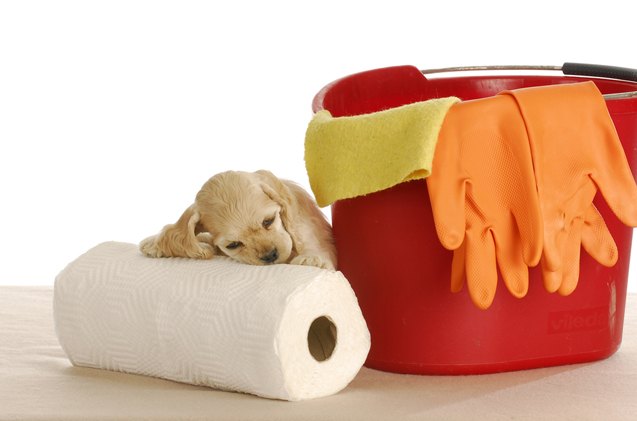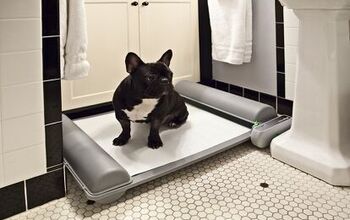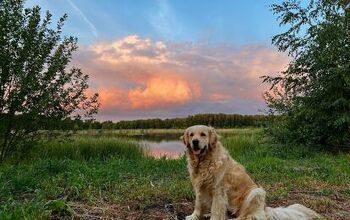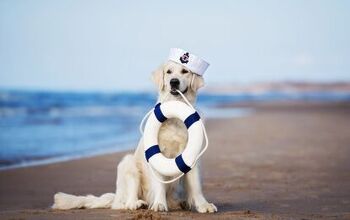6 Puddle-Proof Tips For Potty Training Your Puppy

Everyone loves a puppy, but not everyone loves the experience of training them. After all, When you bring home a puppy, you’re bringing home a little poop factory. Messes will happen. It’s unavoidable. The key thing is being prepared and knowing how to ease along the training process as smoothly as possible. As anyone who has ever had a puppy in their home can attest, it won’t be easy. Yet, the payoff will be worth it. Obviously.
Potty training your puppy may seem like a tricky job, but it really doesn’t need to be. The majority of pups should be completely potty trained within the space of 4 to 6 months, but know that all dogs learn at their own pace and some pooches will take longer of less time to get the hang of things. Stay positive and persevere, and your precious puppy will be house broken before you know it. There is an end to any pupper potty training process. That end involves you no longer finding any stinky surprises around your house. So, don’t give up. You’ll get there.
Be On the Look Out
Be sure to watch your pup like a hawk. She will tell you when she needs to go to the bathroom using a range of subtle clues. It won’t take long for you to pick up on them as long as you are paying attention. Watch out for such behaviors as turning around in circles, sniffing at the floor, pawing the ground, scratching at the door, whining or barking. It’s important to watch her as much as is possible, so you’ll be able to see and identify these signs as early as possible. Some people find it useful to keep their pup in the same room or area as them at all times during this period. Shut the door or use baby gates to confine her to certain rooms. Keep your eyes peeled. You will notice when your puppy has to do her business.
Allow Time for Bathroom Breaks
Remember that your pup is only young and needs to relieve herself more often than an adult dog. You’ll have to more vigilant as a result. Schedule regular bathroom breaks to facilitate your little pups bathroom needs. Depending on her age, a puppy should go out about once every 3 to 4 hours. Keep this regular so that she knows what to expect and she’ll be less likely to have any accidents. Maintaining a schedule early and often is a vital part of the training process. As she gets older, these bathroom breaks can gradually be stretched further apart. But don’t push that too early. It’s important to follow your puppy schedule early on. Eventually, she’ll learn to follow yours. In addition to these scheduled outings, take her outside to eliminate after play sessions, meals, and naps. Give her ample opportunity to take care of her business outdoors and it will significantly cut down the possibility of accidents happening indoors.
Related: Why You Should Start Puppy Crate Training Now
When It’s Time to go Outside
Puppies like routine and prefer to go to the bathroom in the same place every time. Assign a particular part of your garden as a doggy potty area. Do it early and stick with the space. Then, every time that you take her out into the yard, put her on a leash and guide her to the special bathroom spot. Keep her on the least until she has eliminated. It’s important to maintain this routine because if you let her run free, she might decide that sniffing and playing outside is more fun than doing her business. Keeping her on a specific bathroom schedule will go a long way to ensure that your training process goes as painlessly as possible
Teaching a Command
You may find it beneficial to teach your puppy a command to encourage her to go the bathroom. Of course, you can make this command whatever you want, but common choices include “go potty” or “do your business.” It can be anything though. “Make poo” or “take a load off” are also possibilities. She won’t know what this command means straight away, so begin by saying it once she starts urinating or defecating. If you continue doing this each time, she’ll soon associate the word with the act of eliminating and may go when you give her this command. It’s a good practice to help her understand when it’s appropriate to do her little business.
Related: Top 10 Ways to Puppy Proof Your Home
Positive Reinforcement
Once your pup has done her dirty deed outside, praise her enthusiastically. Tell her “good girl,” pet her, and even give her a food reward. This will teach her that going outside is the right thing to be doing. Over time, she won’t need this reward, but that positive reinforcement is so important during the early days. On the other end of the spectrum, make sure that you don’t punish or yell at your pooch when she goes inside. Accidents are natural while she’s learning and yelling at her is only going to scare her or cause a setback. Negative reinforcement never yields the same training results as positive reinforcement. So, make an effort not to fall into that trap.
In Case of an Accident
As we know, accidents happen, so if you turn your back for a second and then find your puppy going to the bathroom inside, you should know what to do. Give one loud clap, but don’t yell. This should stop her momentarily. Pick her up and take her outside, where she can finish her business. Praise her once she’s done going outside. Should you miss the action and find that your pooch has already done her business inside, don’t even acknowledge it. Telling her off after the fact will only confuse her, as she won’t know why you’re annoyed or what she’s done wrong. Simply clean up the mess thoroughly, preferably with an enzymatic cleaning product which will get rid of the odor. That way your pup won’t be encouraged to go in the same place again. Be patient with her. This all will pass and soon she’ll know when and were to go to the bathroom. Until then, try to treat her as positively as possible. Getting upset over accidents won’t help either of you.

Kate Barrington is the loving owner of two cats (Bagel and Munchkin) and a noisy herd of guinea pigs. Having grown up with golden retrievers, Kate has a great deal of experience with dogs but labels herself a lover of all pets. Having received a Bachelor's degree in English, Kate has combined her love for pets and her passion for writing to create her own freelance writing business, specializing in the pet niche.
More by Kate Barrington























